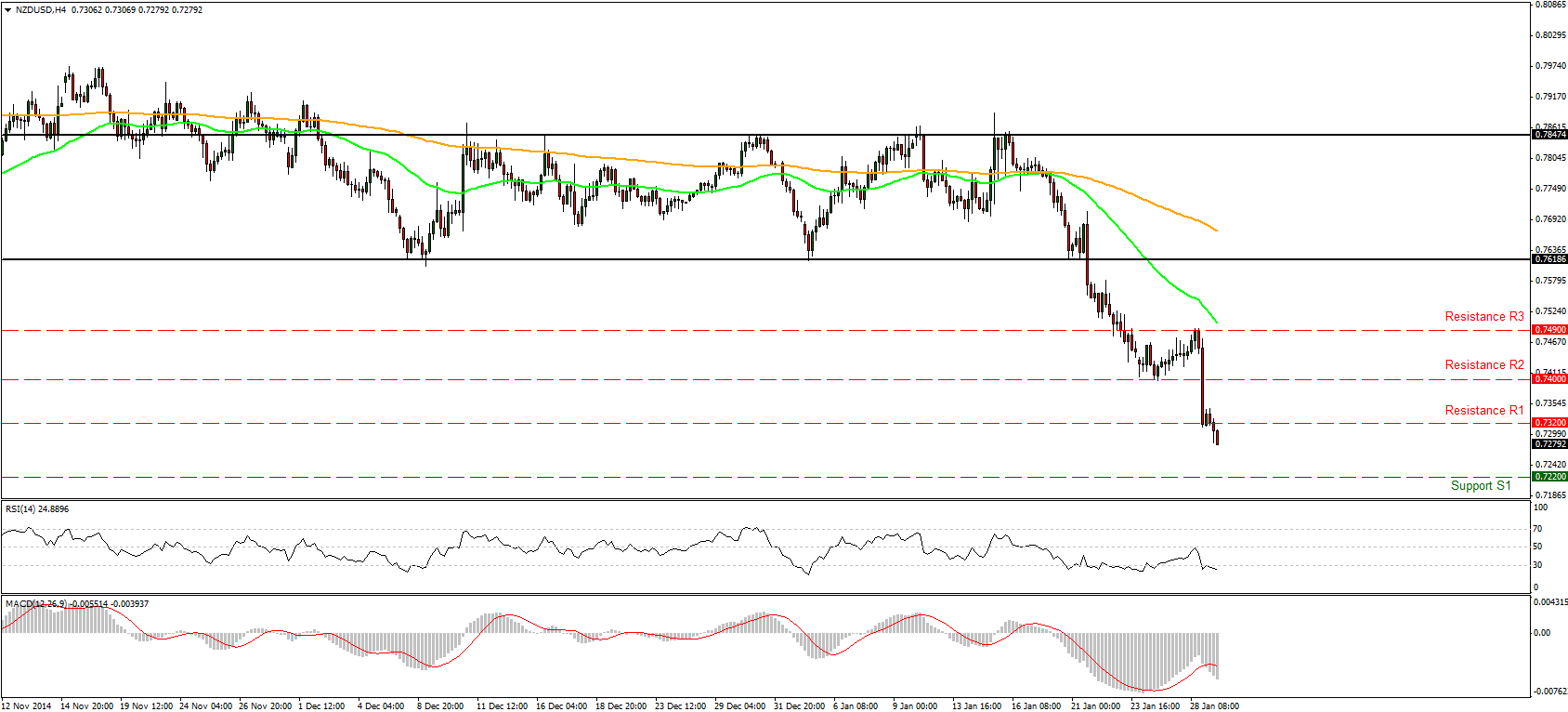NZD/USD
The dollar traded mixed against its G10 counterparts during the European morning Thursday. It was higher against AUD, CHF, NZD, in that order, while it was lower against SEK, NOK and EUR. The greenback was stable vs GBP, CAD and JPY.
The euro was resilient ahead of the preliminary national German CPI for January, despite all of the regional CPIs entering deflationary territory on a yoy basis. These figures indicate that the national inflation rate, due out late this afternoon, is also likely to fall to deflation. The data raise the likelihood that Friday’s Eurozone CPI is likely to fall further into deflationary territory as forecast. This may put further selling pressure on EUR. In the meantime, the German unemployment rate declined to 6.5% from 6.6% in December, and the unemployment change declined 9k, a better performance than -25k previously, showing that the labor market in Germany remains strong.
Eurozone’s M3 money supply grew 3.6% yoy in December, at a faster pace than +3.1% yoy previously and better than expected. Loans to private sectors fell on a yoy basis in December, but at a slower pace than in November. The ECB’s massive QE program is probably the last thing left to support lending and boost growth and prices in the Eurozone.
NZD/USD collapsed after the Reserve Bank of New Zealand shifted from a tightening bias to a neutral bias and even held out the possibility that the next move in rates would be a cut. The pair found an initial support near the 0.7320 zone, but broke that line and declined even more during the European morning Thursday. Given the negative sentiment towards kiwi, I would expect the pair to fall further at least until our 0.7220 (S1) support line. Our momentum studies support the notion. The RSI fell sharply below its 30 line and is pointing down, while the MACD, already negative, crossed below its trigger line. On the daily chart, the recent break below the black channel the pair has been trading in since December switched the bias to the downside, confirming the trend mode of this pair.
Support: 0.7220 (S1), 0.7180 (S2), 0.7120 (S3).
Resistance: 0.7320 (R1), 0.7400 (R2), 0.7490 (R3).
Recommended Content
Editors’ Picks
EUR/USD clings to gains above 1.0750 after US data

EUR/USD manages to hold in positive territory above 1.0750 despite retreating from the fresh multi-week high it set above 1.0800 earlier in the day. The US Dollar struggles to find demand following the weaker-than-expected NFP data.
GBP/USD declines below 1.2550 following NFP-inspired upsurge

GBP/USD struggles to preserve its bullish momentum and trades below 1.2550 in the American session. Earlier in the day, the disappointing April jobs report from the US triggered a USD selloff and allowed the pair to reach multi-week highs above 1.2600.
Gold struggles to hold above $2,300 despite falling US yields

Gold stays on the back foot below $2,300 in the American session on Friday. The benchmark 10-year US Treasury bond yield stays in negative territory below 4.6% after weak US data but the improving risk mood doesn't allow XAU/USD to gain traction.
Bitcoin Weekly Forecast: Should you buy BTC here? Premium

Bitcoin (BTC) price shows signs of a potential reversal but lacks confirmation, which has divided the investor community into two – those who are buying the dips and those who are expecting a further correction.
Week ahead – BoE and RBA decisions headline a calm week

Bank of England meets on Thursday, unlikely to signal rate cuts. Reserve Bank of Australia could maintain a higher-for-longer stance. Elsewhere, Bank of Japan releases summary of opinions.
